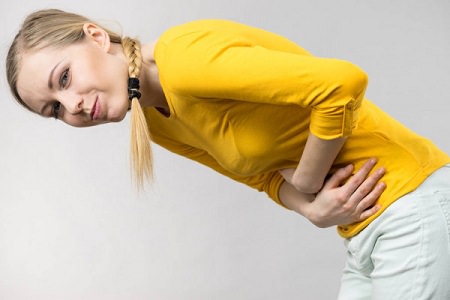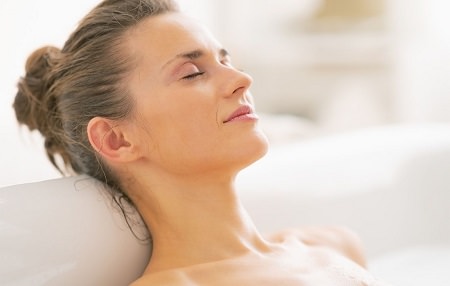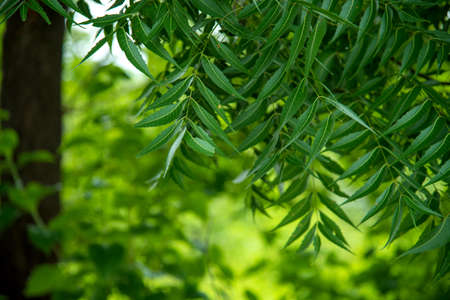During periods, a woman goes through a symptom pertaining to the skin- ‘Period Rash’. This article explains home remedies for period rashes.

Introduction
Throughout the duration of periods every month, most women experience stress, discomfort, and pain. Added to the discomfort, some women develop a rash in the pubic region, which is commonly known as the period rash. Red, inflamed, itchy bumps or rash appear on the skin of the vaginal area, inner thighs, vulva, and buttocks. A period rash can be caused and aggravated by many factors. Decreased estrogen levels during periods can cause your skin to become itchy, sensitive, or irritated.
Sensitive skin is further irritated by the chemicals used in some sanitary pads. Sometimes, the rash appears as a reaction of your skin to contact the pad, medically termed as contact dermatitis. Adhesives used to keep the pad in place can also cause a rash. Scents used by some pad brands can also cause an allergic rash in your vaginal area. The constant friction caused by wearing a pad for too long coupled with heat and moistness in the vaginal area can aggravate the rash. Consult a doctor to find out if your pad causes the rash.
Ways to avoid getting the rash
The most important step to avoid period rash is to use light, soft and unscented pads. Try different brands of sanitary napkins or try an organic cotton pad. Additionally, do not wear a pad for more than 4 hours and change pads frequently.
While on periods, avoid wearing synthetic or tight clothes as they can increase friction between the pad and the skin. Wear loose, cotton underwear to reduce friction and sweating and to encourage ventilation.
Maintain proper hygiene by washing your vaginal area with plain, warm water every few hours. Drying the skin thoroughly after washing will discourage the growth of bacteria.
Keep in mind to not use harsh soaps or body wash liquids to clean your vaginal area, as they may further irritate your sensitive skin. Try using a gentle talcum powder on your pubic area and inner thighs to reduce friction and absorb excess moisture. If all these precautions don’t help, it is advisable to switch to tampons or menstrual cups.
Advantages of Using Menstrual Cups
Menstrual cups made of medical-grade silicone or latex-free materials are the current trend. They are small funnel-shaped soft cups that can be inserted into the vagina to collect the period flow. They hold between 20 to 25ml of liquid. You can use them for up to 12 hours at a time. They are easy to remove, empty, wash and reinsert. Moreover, they are reusable and last for 3 to 5 years. They are eco-friendly, economical, leakproof, hold more blood than pads and help avoid the chafing, dampness, heat, and rashes that pads cause.
Home Remedies for Period Rashes
1. Over the Counter Creams
Apply over the counter hydrocortisone cream on the rash. You can also consult a doctor to find out if you need to use an antibacterial cream or antifungal cream as rashes can be a result of either bacteria or could be a yeast infection due to fungus.
2. Sitz Bath

Use a special sitz bath for relief. You can fill a sitz bath with warm water, placed over the toilet, and you can sit in it for about 10 minutes to soothe the irritation caused by the rash. Dry the area thoroughly after the soak.
3. Apple Cider Vinegar
Dip a cotton ball in apple cider vinegar and apply over the rashes. It will relieve the itching. You can use it three times a day.
4. Warm or Cold Compress
Warm or cold compresses also help relieve period rash. Wrap a few ice cubes in a clean cloth and apply over the rashes. It will numb the pain and reduce inflammation. Alternatively, soak a clean cloth in warm water, squeeze out extra water and apply on the rashes to obtain relief from pain and itchiness.
5. Coconut Oil
Wash and clean the vaginal area and inner thighs and dry well. Apply pure coconut oil on the rashes using a cotton ball and leave overnight. Mix a solution of two tablespoons of baking soda in a cup of water and apply it on the rash the following morning. After it dries, wash it using cold water and dry thoroughly with a clean towel.
6. Neem Leaves

Boil some neem leaves for a few minutes in a saucepan filled with water. Cool the water and strain the liquid and use it to wash your vaginal area. Neem has anti-bacterial and anti-inflammatory properties, which will help reduce swelling and fight infection.
Takeaway
Usually, the rash will subside in 2 or 3 days but if the rash persists for more than a week, consult your doctor. Untreated rashes may become infected and will take longer to heal.
